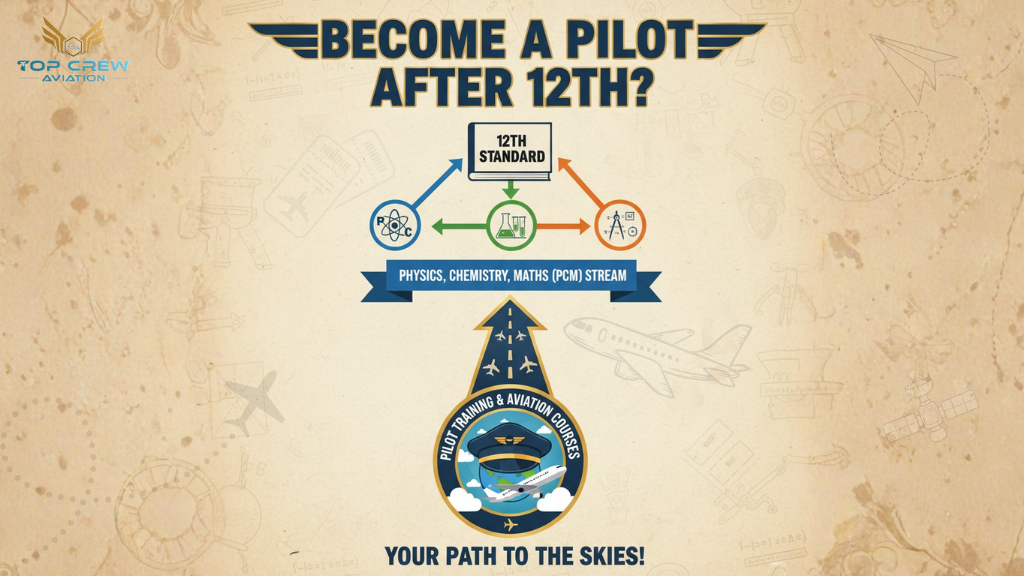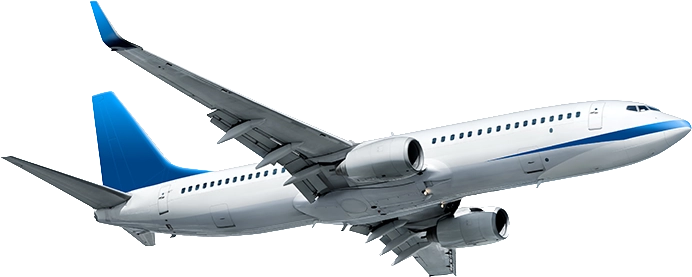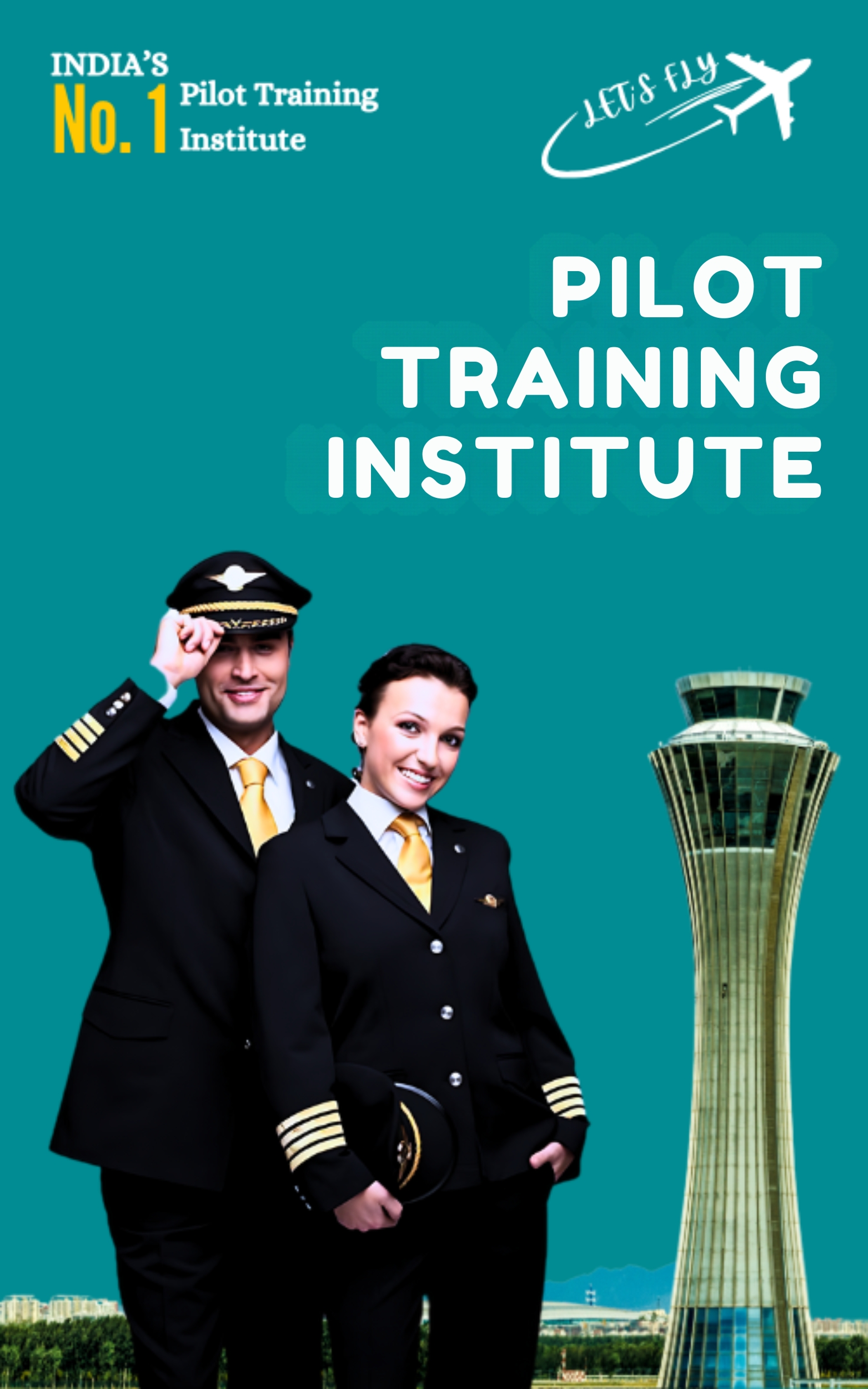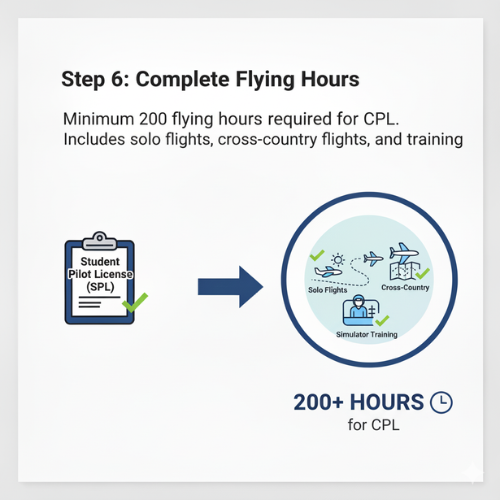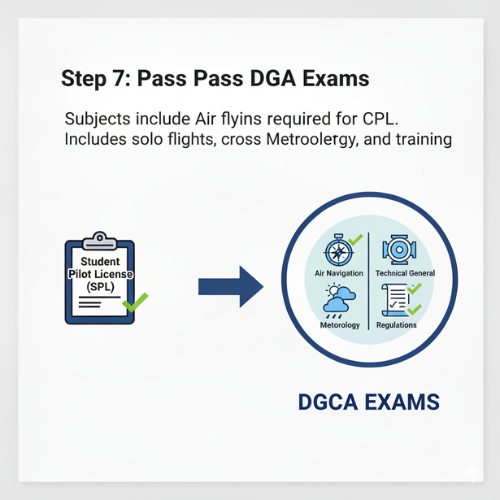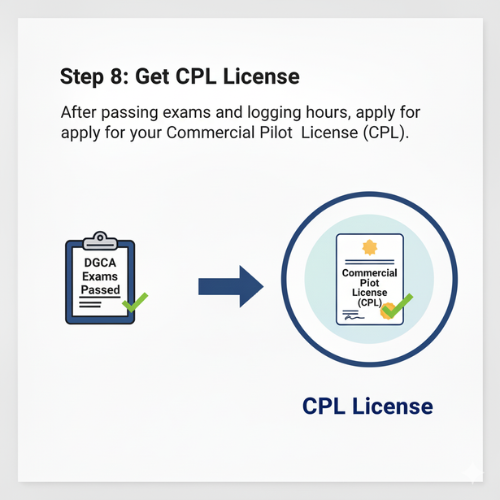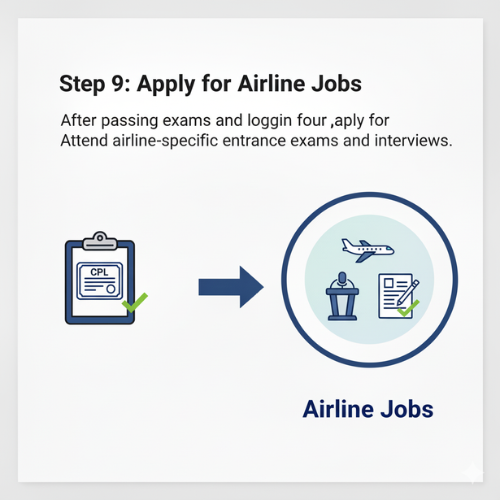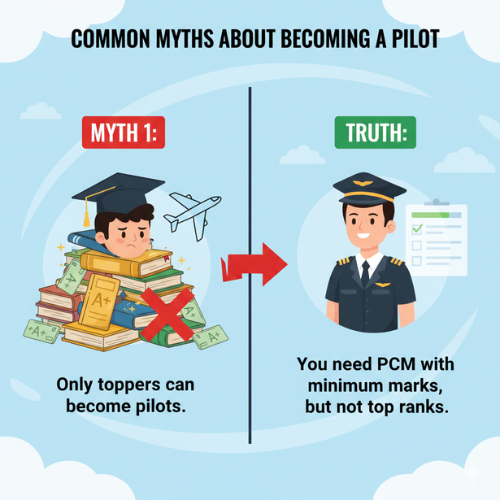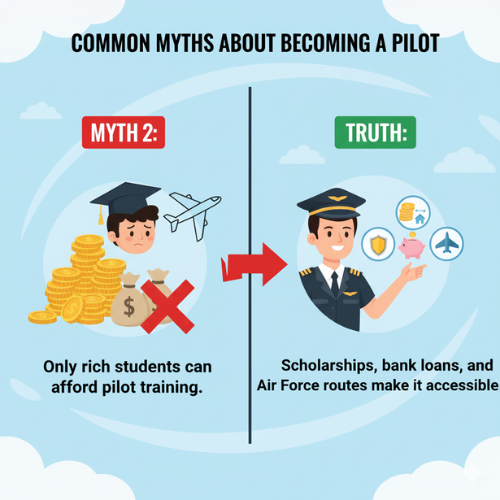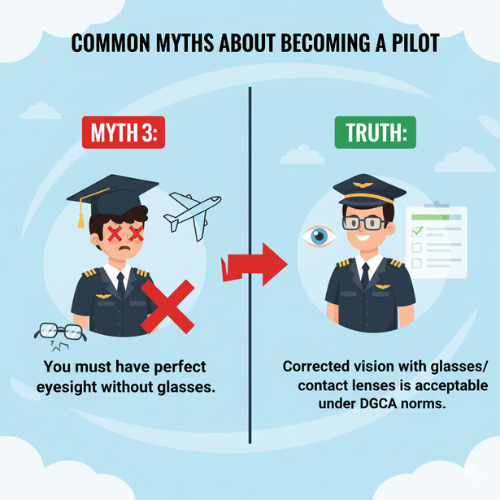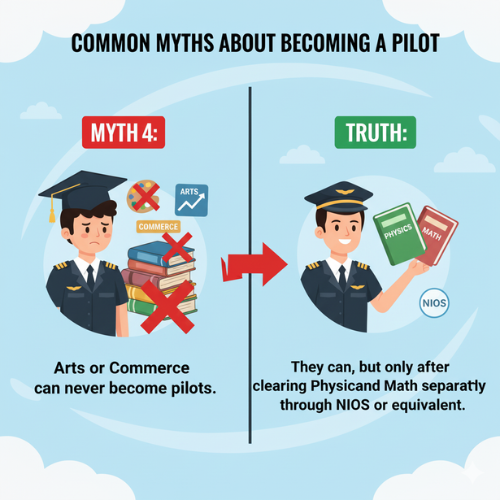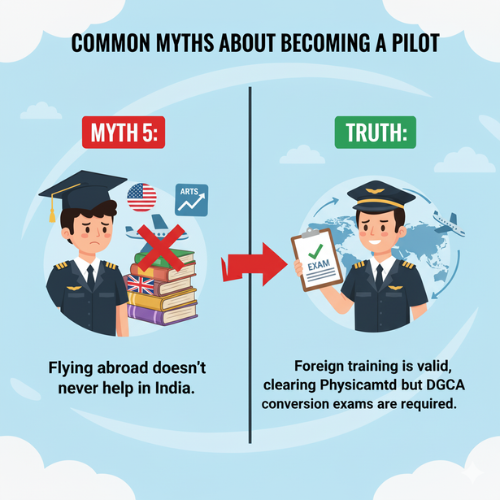Which Stream is Required to Become a Pilot After 12th?
Do you dream of flying high above the clouds, commanding an aircraft, and exploring the world? Many students in India aspire to become a pilot after 12th, but one of the most common questions is: Which stream should I choose in Class 11 and 12 to become a pilot? This decision is crucial because your choice of stream directly impacts your eligibility for aviation training, pilot entrance exams, and future career opportunities.
The good news is that becoming a pilot is possible if you plan early. If you are currently in Class 10 or have just finished your board exams, this is the perfect time to make the right choice. With the aviation industry growing rapidly in India and worldwide, pilots are in huge demand. Whether you dream of flying for commercial airlines, defense services, or private charters, the first step is understanding the academic path.
In this blog, we will answer the most important question: Which stream is required to become a pilot after 12th? We’ll also discuss eligibility, subject requirements, entrance exams, and step-by-step guidance for students who want to start their journey.
By the end of this guide, you’ll have a clear idea of:
- The right stream and subjects to choose.
- Minimum marks and eligibility criteria.
- Training and exams required.
- Different pathways to becoming a pilot.
So, if you’re serious about your aviation dreams, keep reading — this could be the roadmap to your flying career.
Which Stream Should You Choose After 10th?
The first and most important step to become a pilot after 12th is choosing the right stream in Class 11.
The required stream is Science with Physics and Mathematics.
Why? Because both subjects are mandatory for pilot training and license eligibility. The Directorate General of Civil Aviation (DGCA), the governing body of civil aviation in India, has clearly stated that candidates must have passed 10+2 with Physics and Mathematics to apply for a Commercial Pilot License (CPL).
Here’s a quick breakdown:
| Stream Option | Subjects | Eligibility for Pilot Training |
| Science (PCM) | Physics, Chemistry, Mathematics | ✅ Eligible |
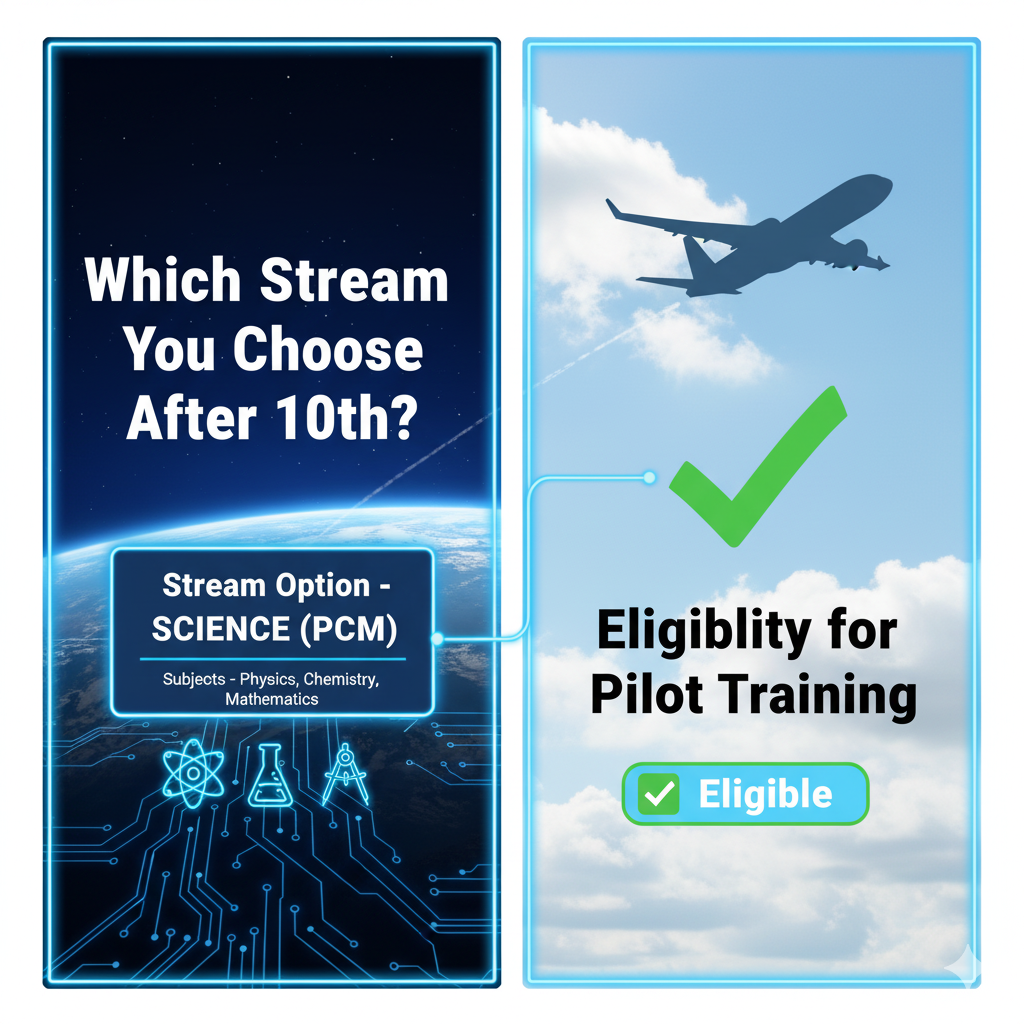
Key Point: Only Science (with PCM) students are eligible to apply directly after 12th. Students from Commerce or Arts cannot apply unless they later appear for separate Physics and Math exams through recognized boards like NIOS (National Institute of Open Schooling).
So, if you’re still deciding on your stream after Class 10, choose Science with PCM. This will keep the path open for aviation, engineering, and other technical careers.
Tip for students: Even though Chemistry is part of PCM, it is not mandatory for pilot training. The focus is mainly on Physics and Mathematics.
Minimum Marks and Eligibility Criteria
Choosing the right stream is just the first step. To become a pilot after 12th, you also need to meet the basic eligibility requirements.
Academic Eligibility
- Must have passed 10+2 with Physics and Mathematics.
- Minimum 50% marks in aggregate (some academies ask for 55%).
- If you did not take PCM in school, you can appear for Physics and Math from NIOS or any recognized board.
Age Limit
- Minimum age: 17 years (to apply for Student Pilot License).
- Maximum age: Usually 32–35 years for commercial airlines, but varies.
Medical Fitness
- Must clear DGCA Class 1 Medical Examination from an approved medical examiner.
- Key requirements: Good eyesight (6/6 vision, corrected with glasses if needed), good hearing, and overall physical fitness.
Citizenship
- Indian students can apply for DGCA licenses.
- International students must meet equivalent requirements in their country.
Example: If you scored 60% in PCM and are 17 years old, you can directly apply for pilot training schools in India. But if you studied Commerce, you need to re-appear for Physics and Math to qualify.
Quick Tip: Always check the specific eligibility requirements of the flight school you’re applying to.
In short, Science with PCM + 50% marks + Medical fitness = Pathway to Pilot Training.
Pathways to Become a Pilot After 12th
There are multiple pathways you can follow to become a pilot after 12th. The route you choose depends on your career goals and budget.
1. Commercial Pilot License (CPL)
- Direct path after 12th with PCM.
- Duration: 18–24 months.
- Cost: ₹30–40 lakhs in India; can go higher abroad.
- Requirement: 200 flying hours + DGCA exams.
2. Indian Air Force (Defense Pilot)
- Clear NDA (National Defence Academy) exam after 12th.
- Stream required: Science with PCM.
- Benefits: Training is fully sponsored by the Indian government.
- Career: Fighter jets, helicopters, transport aircraft.
3. Integrated Pilot Training Programs
- Offered by top airlines and flight schools (e.g., IndiGo Cadet Pilot Program).
- Includes ground training, simulator training, and flight hours.
- Higher cost but ensures structured training and sometimes job assurance.
4. Abroad Training Programs
- Many students choose countries like USA, Canada, South Africa, and Philippines.
- Duration: 12–18 months.
- Faster licensing but requires DGCA conversion exams when returning to India.
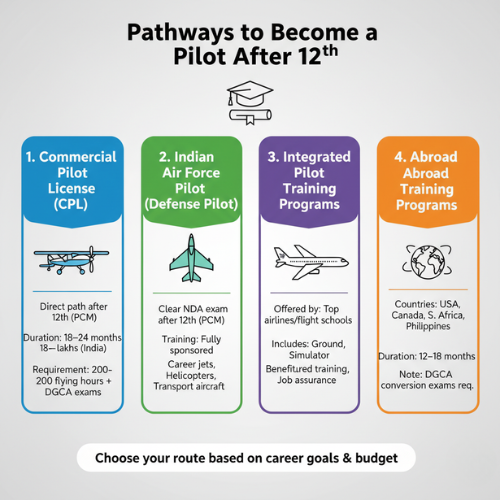
Comparison Table
| Pathway | Cost | Duration | Career Option |
| CPL (India) | ₹30–40 lakhs | 2 years | Airline Pilot |
| NDA (Air Force) | Govt-funded | 3 years | Defense Pilot |
| Cadet Program | ₹80–90 lakhs | 3–4 years | Airline Placement |
| Abroad Training | ₹25–35 lakhs | 1.5 years | Airline Pilot (after conversion) |
Step-by-Step Guide to Becoming a Pilot After 12th
Here’s a simplified step-by-step roadmap:
Step 1: Choose the Right Stream
- Opt for Science with PCM in Class 11 and 12.
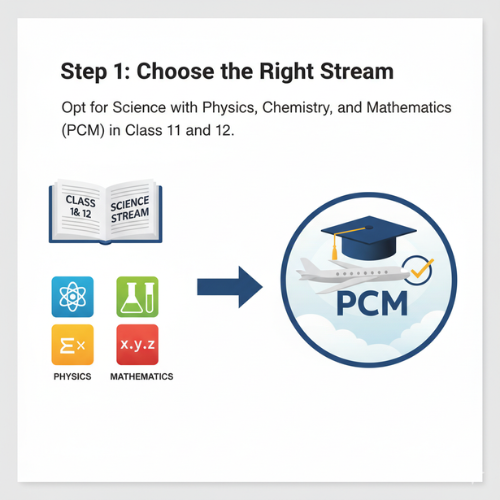
Step 2: Pass Class 12 with Required Marks
- Aim for at least 50–55% in PCM.
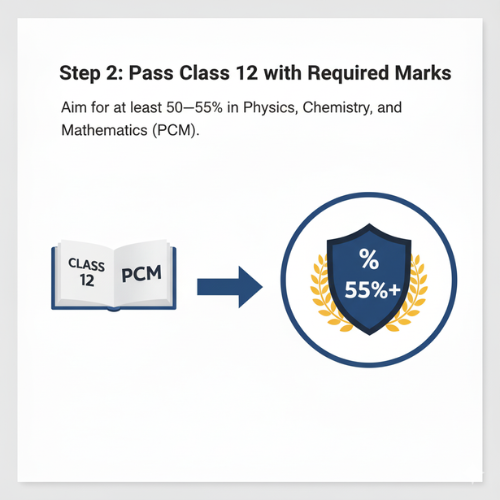
Step 3: Clear Medical Examination
- Book DGCA Class 1 Medical Test.
- Ensure eyesight, hearing, and fitness are approved.

Step 4: Apply for Student Pilot License (SPL)
- Start with ground subjects like Air Navigation, Aviation Meteorology, and Air Regulations.
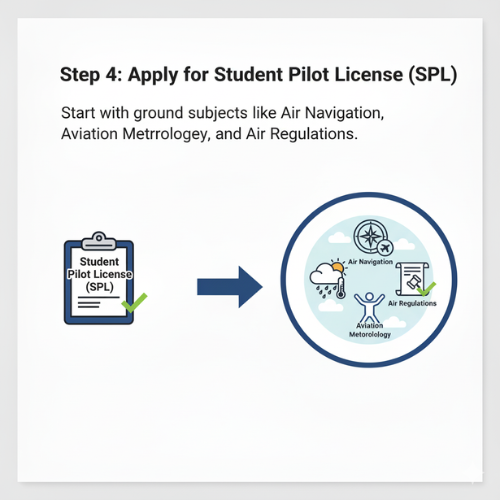
Step 5: Enroll in a Flying School
- Choose DGCA-approved flying academies in India or abroad.
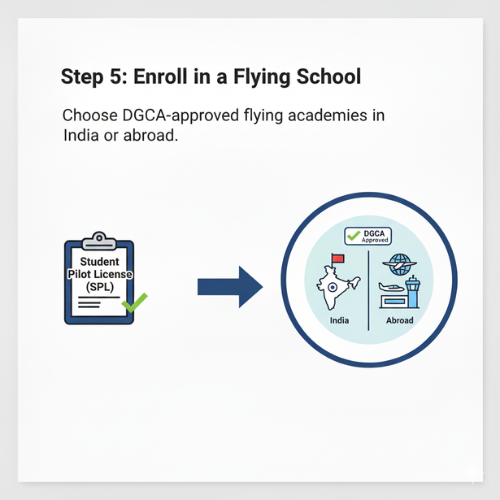
Step 6: Complete Flying Hours
